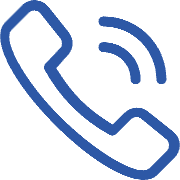
English

BLOG NEWS
2025-10-21
The Backbone of Modern Connectivity
Ever wondered what keeps our world connected? Yep, it's those little cables snaking around our tech setups, known as patchcords. These unsung heroes of the networking world are often overlooked, but they play a crucial role in linking devices together. Whether you're a tech whiz or a casual user, understanding patchcords can help you appreciate the intricate web of connectivity we often take for granted.
What Exactly is a Patchcord?
So, what's the deal with patchcords? Simply put, they're short cables used for connecting different devices within a network. Think of them as the friendly messengers that carry data from one point to another. They come in various types, including fiber optic and twisted-pair cables, each designed for specific tasks. From your home Wi-Fi setup to large-scale data centers, patchcords are everywhere!
Types of Patchcords: A Quick Rundown
- Fiber Optic Patchcords: These are the high-speed champs, utilizing light signals to transmit data. Perfect for long distances!
- Twisted Pair Patchcords: Commonly found in Ethernet networks, these cables are designed to minimize interference. You'll spot them in everything from offices to schools.
- Coaxial Patchcords: Mostly used for cable TV and internet connections, coaxial cables are robust and reliable.
Why Patchcords Matter
Now, let's get into why patchcords are a big deal. They ensure that data flows smoothly between devices. Imagine trying to stream your favorite show, only to find out your connection is lagging because of a faulty cable! Frustrating, right? Having the right patchcord can make all the difference when it comes to speed and reliability.
Choosing the Right Patchcord
When it comes to selecting a patchcord, you can't just pick any old cable off the shelf. Nope! Here are a few things to consider:
- Length: Make sure you get a cable that's long enough for your setup without excessive slack.
- Type: Choose between fiber optic and twisted pair based on your needs. Fiber is faster, but twisted pair is often sufficient for home use.
- Quality: Always opt for high-quality materials to prevent signal loss and ensure longevity.
Troubleshooting Common Issues
Even with the best patchcord, issues can arise. Here are some troubleshooting tips:
- Check Connections: Sometimes, it's just a loose connection. Give those cables a little wiggle!
- Inspect for Damage: Look for frays or kinks in the cable. A damaged patchcord can lead to unreliable connections.
- Test with Another Device: If you suspect the patchcord is the issue, swap it out with another one to see if the problem persists.
The Future of Patchcords
As technology evolves, so too will patchcords. With the rise of 5G and advancements in fiber optic technology, the demand for faster, more efficient patchcords is only going to increase. Innovations like plug-and-play patchcords will make setups easier than ever!
Wrap-Up
In a nutshell, patchcords may seem like a small piece of the tech puzzle, but they're essential for keeping us connected. So next time you plug in your devices, take a moment to appreciate these little cables that make it all possible. They truly are the unsung heroes of our digital world!
Related News














